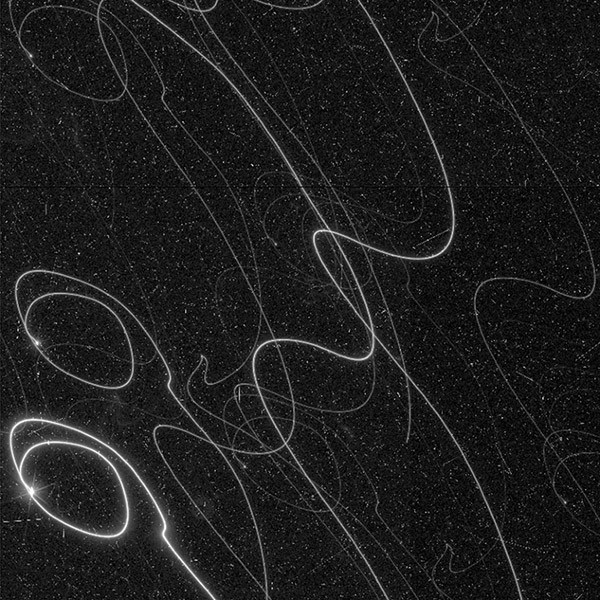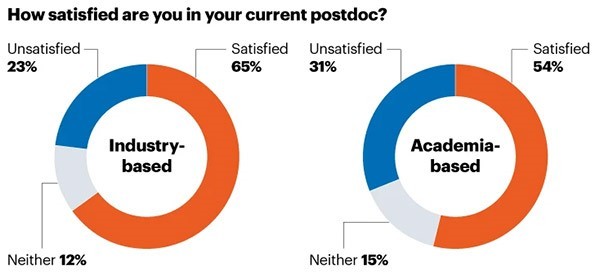Hello Nature readers, would you like to get this Briefing in your inbox free every day? Sign up here.

A problem with onboard software meant that the space observatory Euclid sometimes couldn’t lock into place, producing images that appear to show swirling star trails. (ESA/Euclid Consortium/TAS-I (CC BY-SA 3.0 IGO))
A software update has fixed the European space telescope Euclid, which started performing tiny pirouettes shortly after launching in July. Euclid is designed to map the positions of 1.5 billion galaxies over the next six years. During testing, the observatory’s automated pointing system was mistaking cosmic noise for faint stars and was reorienting the spacecraft in the middle of taking a photograph.
Nature | 5 min read
Our brains use one mechanism to size up four or fewer items, and a different one for assessing five or more — which is why doing the latter is so much harder. The brain contains specialized neurons that fire when we see a specific number of objects: some fire primarily when presented with one dot on a screen, for example. Brain scans of 17 people revealed that the neurons specializing in numbers of four or less responded very specifically and selectively to their preferred number. Neurons that specialize in five through nine responded strongly not only to their preferred number, but also to numbers immediately adjacent to it.
Nature | 4 min read
Reference: Nature Human Behaviour paper
A new kind of quantum computer uses a high-resolution microscope to control titanium atoms sitting on a surface. The spins of the atoms’ electrons act as quantum bits (qubits), which are key to performing quantum computations. Researchers used microwave signals from a scanning tunnelling microscope to perform a simple two-qubit operation, which took just nanoseconds — faster than is possible with most other types of qubit. But the approach is unlikely to compete with the leading technologies, which are already being scaled up to hundreds of qubits.
Nature | 4 min read
Reference: Science paper
Features & opinion
Table of Contents
Expensive gene therapies for rare diseases are getting a second chance after being abandoned by pharmaceutical companies for being unprofitable. The Telethon Foundation, a charity in Italy, is taking over production of Strimvelis, a treatment for one of the immune disorders known informally as ‘bubble baby disease’. Others are investigating ways to reduce the costs for developing and producing gene therapies. “If we succeed in this, we will change the calculus of what constitutes a ‘disease of commercial interest’,” says P. J. Brooks at the US National Center for Advancing Translational Sciences.
Nature | 6 min read
Point Nemo, the most isolated spot in the world’s oceans, is thought to be the final resting place of more than 263 space objects — including the first modular space station, Soviet-era Mir. How much of each spacecraft survived re-entry into Earth’s atmosphere is largely guesswork. Any remains that made their way to the sea floor are likely to remain well preserved by the deep, icy water, which could make Point Nemo a goldmine for future archaeologists.
BBC Future | 10 min read
Postdoctoral researchers feel more optimistic about their future careers than they did in 2020, Nature’s second global survey has revealed. Out of 3,838 self-selecting respondents from 93 countries, 41% felt confident about their job prospects, compared with 28% in 2020. Overall, however, postdocs still feel as though they are academia’s drudge labourers: overworked, underpaid, surviving on precarious short-term contracts and lacking recognition. “Fundamentally, I do not think the postdoc experience has changed,” says career specialist Michael Matrone. “What I think has changed, catalysed by the pandemic, is a greater awareness of and intolerance for the oppressive and exploitative systems that exist in academia.”
Nature | 12 min read

This year’s Nature survey of postdocs included the perspectives of those in industry (7% of the total respondents) for the first time. Their answers suggest that they are better paid and better able to avoid overtime completely than are postdocs in academia.
